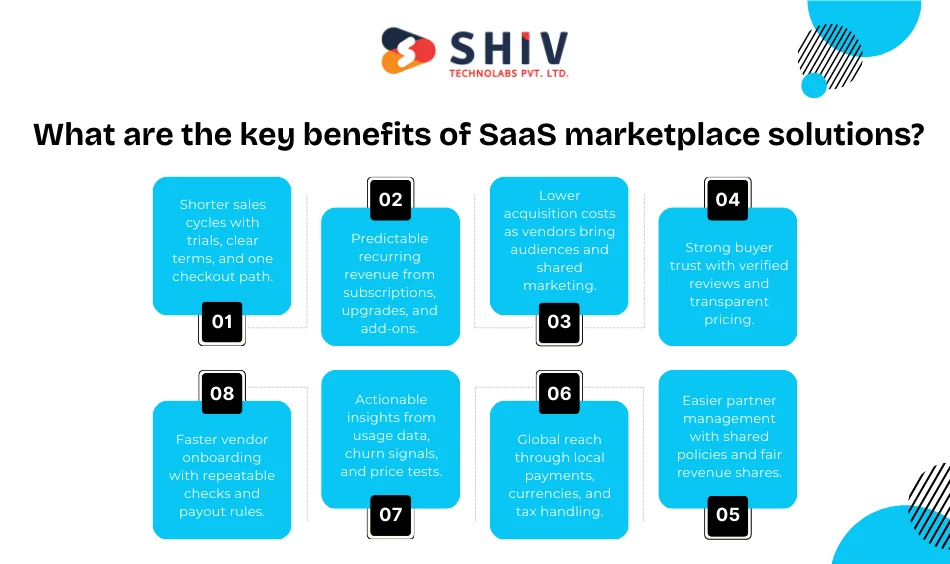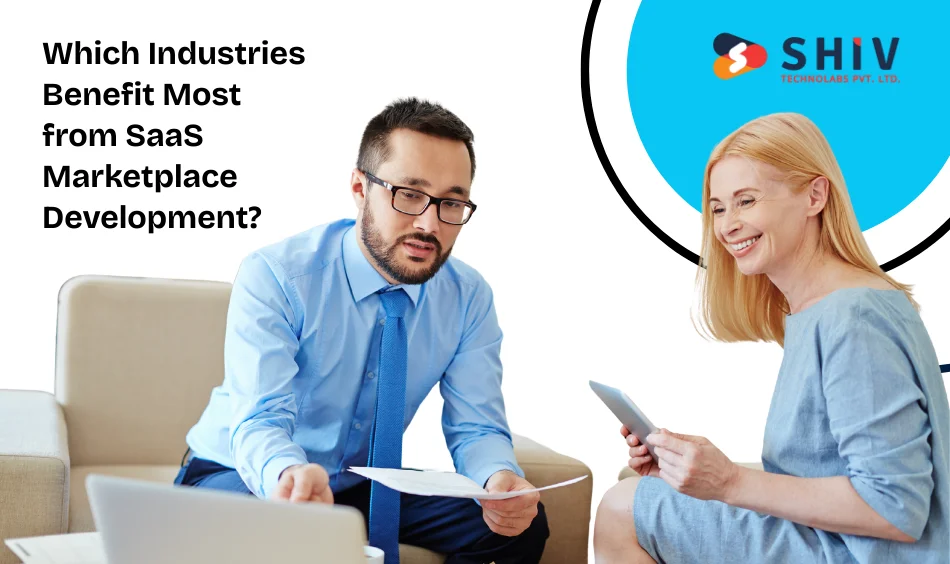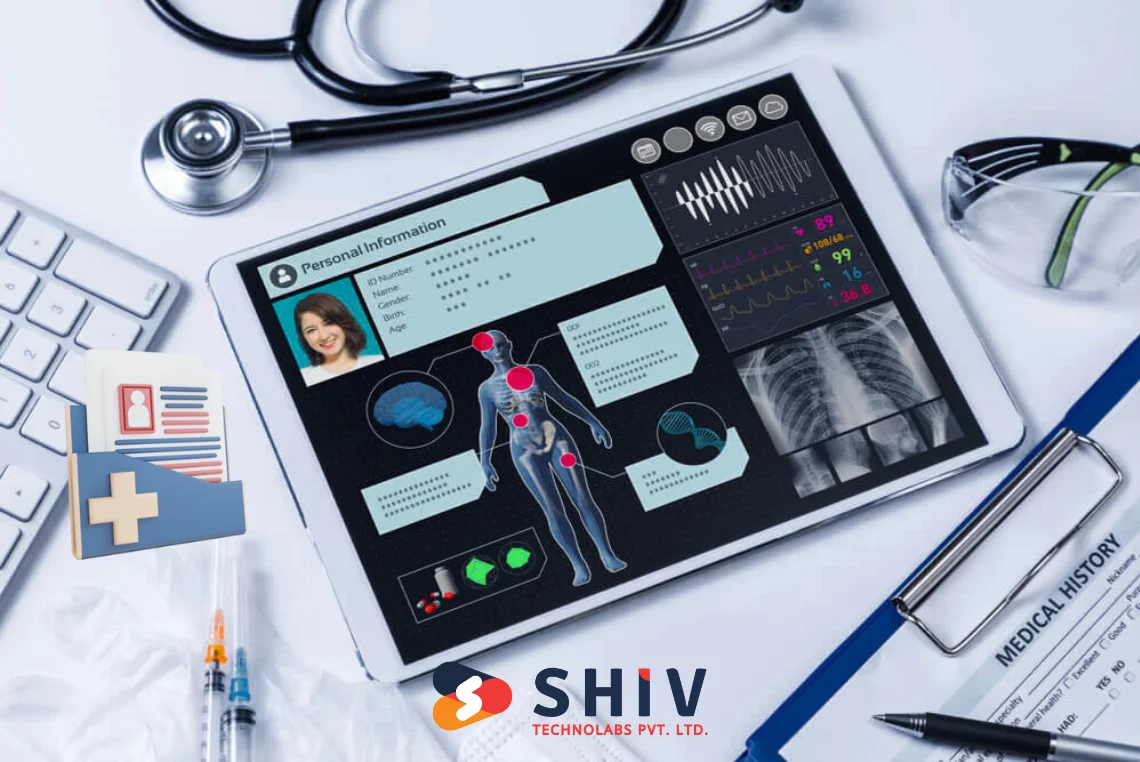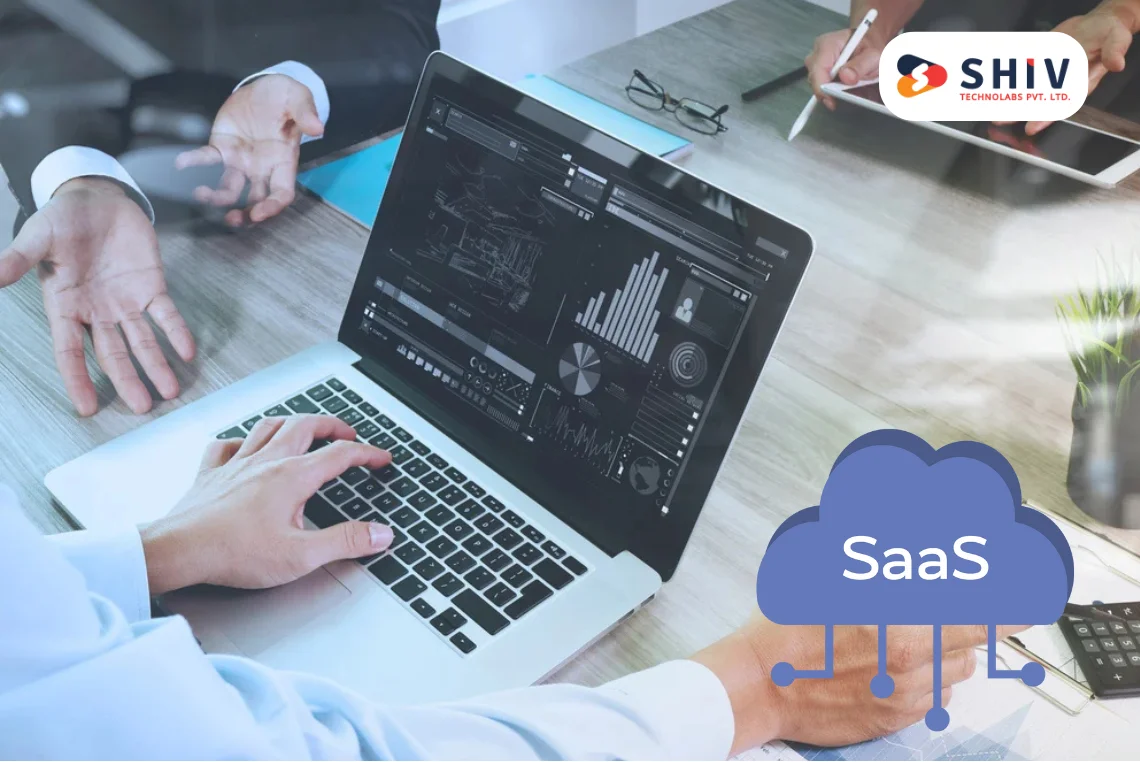Table of Contents
A SaaS marketplace is a shopfront where buyers and software vendors meet on one trusted platform. With expert SaaS development services, you can build listings, secure payments, and onboarding that support steady growth. Vendors gain reach, while buyers compare options, start trials, and subscribe with clear pricing and billing.
This guide sets the stage for costs, use cases, and tech choices that drive marketplace success. We will cover pricing models, integrations, and security, so your build hits targets without wasted effort.
What Is SaaS Marketplace Development and Why Does It Matter?
SaaS marketplace development means planning, building, and running a platform that sells third-party subscriptions to business and IT teams worldwide. It matters because each new vendor expands the catalog, brings fresh demand, and lifts revenue with minimal overhead. Buyers win with choice, faster procurement, and clear terms that legal and finance teams can accept quickly.
How does SaaS marketplace software work?
SaaS marketplace software runs listings, trials, pricing, checkout, invoicing, renewals, tax handling, and vendor payouts. It connects to payment gateways, tax engines, CRM, ERP, help desks, and analytics to keep work consistent. The platform sets vendor terms, collects funds, schedules payouts, automates renewals, and records audits for finance teams.
What are the key benefits of SaaS marketplace solutions?

Here are the practical gains from SaaS marketplace solutions for owners, vendors, and buyers across daily operations and growth:
- Shorter sales cycles with trials, clear terms, and one checkout path.
- Predictable recurring revenue from subscriptions, upgrades, and add-ons.
- Lower acquisition costs as vendors bring audiences and shared marketing.
- Strong buyer trust with verified reviews and transparent pricing.
- Faster vendor onboarding with repeatable checks and payout rules.
- Global reach through local payments, currencies, and tax handling.
- Actionable insights from usage data, churn signals, and price tests.
- Easier partner management with shared policies and fair revenue shares.
You can shape the model around your goals: vertical depth, broad catalog reach, or a cloud partner program. Each path sets different rules for pricing, integrations, and growth, which we detail in the next part.
For early traction, start with one buyer segment, one region, and a tight set of integrations. Add vendors, payments, and reports in planned phases, so quality stays high while revenue grows steadily.
What Are the Core Features of SaaS Marketplace Software?
Which features make SaaS marketplace platforms successful?
In SaaS marketplace development, core features shape daily work, vendor trust, and predictable revenue over time. Strong SaaS marketplace software links payments, listings, and analytics with clear workflows across product, finance, and support.
Platforms that perform share five traits that cut manual work and reduce billing mistakes at scale. Adopt these early, then deepen them as traffic grows and vendors add more plans and regions.
- Multi-vendor management: Control who lists, how prices work, payout timing, and policy checks for tax, KYC, and content quality.
- Subscription billing: Run trials and coupons; handle upgrades, downgrades, proration, taxes, refunds, and renewals without hand edits.
- Analytics and reporting: Track conversion, churn, cohorts, LTV, disputes, and payouts with saved views and scheduled exports.
- API connectivity: Connect CRM, ERP, help desk, tax engines, and payment rails; fire webhooks for orders, refunds, and renewals.
- Security controls: Use SSO and MFA, encrypt data in transit and at rest, and keep granular audit logs.
What are the must-have user features?
User features decide adoption, reviews, and renewal rates across the catalog in daily use and during procurement. Ship the basics first, then extend based on feedback and volume from real customers over quarters.
Feature comparison table
| Feature | Vendor view | Buyer view |
|---|---|---|
| Vendor dashboard | Create listings, set prices and coupons, track payouts and disputes. | Read seller details, review terms, and check version history. |
| Buyer account | — | Manage subscriptions, invoices, renewals, and team seats. |
| Search & filtering | Tag by use case, industry, and supported integrations. | Find tools by need, price, reviews, and compatibility fast. |
| Payment integration | Receive scheduled payouts with fees and taxes broken out. | Pay by card, invoice, or credits with clear refund handling. |
| Ratings & reviews | Request feedback and answer questions on the listing page. | Read verified reviews and compare score trends over time. |
Match features to your model and buyer journey, not a generic checklist copied from other platforms. Write clear acceptance criteria, phase the roadmap, and ship small chunks that protect data and revenue. Add tickets, release notes, and usage alerts after your first wave of vendors goes live.
How Much Does SaaS Marketplace Development Cost?
Costs change with scope, integrations, and team location, so you should plan the core first. Focus on listings, billing, payouts, and reviews, then add depth as real usage grows. This approach keeps spending under control while you test pricing and vendor demand.
The SaaS marketplace development cost for an MVP usually sits in a broad band. Small builds land lower when the scope stays tight and integrations are few. Larger builds climb when you add custom rules, advanced billing, and several back-office systems.
What factors move the budget?
- Feature depth: multi-vendor controls, credits, coupons, and payout logic raise hours fast.
- Tech stack: Node.js, Python, or Java carry different hiring pools, tools, and build speeds.
- Team location: USA and Western Europe charge more per hour than India or Eastern Europe.
- Integrations: CRM, ERP, tax, and payment rails each need retries, tests, and observability.
- Compliance: GDPR, SOC 2, or HIPAA require logging, reviews, and audit-ready documents.
- Data work: importing vendor catalogs and plans takes mapping, checks, and sample runs.
- QA and security: automated tests, pen tests, and role checks add time but protect revenue.
Can white-label options reduce spend?
Yes. White-label SaaS marketplace development starts from a proven base and adds your brand, rules, and integrations. It cuts setup time and lowers upfront spend, while a full custom build fits when your workflows or data model differ strongly.
Custom vs white-label costs by region (MVP scope)
| Region | Custom build (one-time) | White-label setup (one-time) | Typical monthly* |
|---|---|---|---|
| USA | $140k–$380k | $20k–$65k | $3k–$9k |
| Europe | $100k–$280k | $18k–$55k | $2.5k–$8k |
| India | $40k–$110k | $9k–$30k | $1k–$4k |
*Monthly covers cloud, support, monitoring, and small updates. Budget 15%–25% of the build cost yearly for larger roadmaps and new regions.
How long does an MVP take?
A custom MVP often takes 4–8 months for listings, billing, payouts, reviews, and two key integrations. A white-label MVP usually ships in 3–8 weeks with branding, payments, tax, and basic analytics.
Practical ways to control cost
- Lock must-have flows first; park “nice-to-have” items for phase two.
- Ship one region, one buyer segment, and two integrations before adding more.
- Write clear acceptance criteria for billing and payouts to avoid rework.
- Budget a steady monthly line for fixes, edge cases, and growth tasks.
Choose the path that matches your timeline, risk tolerance, and vendor strategy, then phase delivery. This plan keeps quality high and gives you real data to guide the next round of features.
Which Industries Benefit Most from SaaS Marketplace Development?

A SaaS marketplace helps sectors with complex buying cycles choose, try, and pay for tools in one place. Buyers cut red tape and get clear pricing, while vendors reach ready demand with predictable payouts and simple support paths.
Why is SaaS marketplace for fintech industry growing fast?
A SaaS marketplace for fintech industry curates banking, payments, and wealth apps under clear risk and audit rules. Teams add KYC, AML, and PCI checks, so finance and compliance sign off without long back-and-forth. Gateways, fraud screens, and ledger exports keep payouts tidy and make month-end close faster across regions.
How does SaaS marketplace for healthcare platforms solve challenges?
A SaaS marketplace for healthcare platforms groups telehealth, patient apps, and EHR add-ons with strict data controls. Teams apply HIPAA safeguards, role-based access, and retention rules that fit clinical and billing workflows. Encryption, consent logs, and breach alerts help providers buy with confidence and pass security reviews on time.
What role does SaaS marketplace for logistics and supply chain play?
A SaaS marketplace for logistics and supply chain connects planning tools, carrier systems, and tracking apps in one catalog. Shippers compare by lane, SLA, and integrations, then subscribe with billing that matches usage or shipments. Predictive ETAs, exception alerts, and inventory signals help teams plan labor and avoid costly rush moves.
Why is SaaS marketplace for edtech platforms in high demand?
A SaaS marketplace for edtech platforms gathers learning apps, LMS add-ons, and assessment tools for schools and training teams. Admins sort by subject, device support, privacy grade, and rollout method, then assign seats by cohort. SSO, roster sync, and usage dashboards cut setup time and give teachers data they can act on.
Industry-wise benefits (quick list)
- Faster procurement with verified vendors, standard terms, and clear billing rules.
- Lower risk through KYC, audit trails, and fine-grained permissions across teams.
- Better adoption from trials, transparent pricing, and trusted reviews on listings.
- Cleaner finance ops with tax handling, payouts, and exportable ledgers each month.
- Quicker vendor onboarding using repeatable checks, templates, and sandbox testing.
- Wider reach through local payment methods, currencies, and language support.
Start with one priority sector for your MVP, then add adjacent categories after real traction. This path controls risk, keeps quality high, and protects budgets while vendors and buyers grow.
What Technologies Power SaaS Marketplace Development?
Pick tools your team can support for years. Favor managed services for speed and lower risk. Teams offering custom SaaS marketplace development services mix the choices below to fit goals and budget.
Core stack
| Layer | Common choices | Primary role | Notes |
|---|---|---|---|
| Backend | Node.js, Python, Java | Core services and billing logic | Pick what your team knows and can hire for. |
| Frontend | React/Next.js, Angular, Vue | Catalog UI and checkout | Add SSR when speed and SEO matter. |
| Data | PostgreSQL, MongoDB, Redis | Ledgers, catalogs, sessions | Keep money trails in PostgreSQL; use Redis for fast reads. |
| Payments | Stripe, Adyen, Braintree | Cards, invoices, refunds, credits, payouts | Ship with clear payout schedules and exports. |
| Identity | OIDC or SAML | SSO, MFA, roles | Access control for vendors and buyers. Map least-privilege roles to actions and data. |
| Cloud | AWS, Azure, GCP | Managed DBs, queues, storage, CDN | Start with managed services to cut ops effort. |
| Observability | OpenTelemetry, Prometheus, Grafana | Traces, metrics, alerts | Watch latency, failures, orders, renewals, and payouts. |
Security must-haves
- Encrypt data in transit and at rest with regular key rotation.
- Enforce SSO and MFA; apply tight roles across services and tenants.
- Add WAF rules, rate limits, and bot checks on public endpoints.
- Keep audit logs for access, billing, and payouts with alerts.
- Respect residency rules and policies for GDPR, HIPAA, and SOC 2.
How to Choose the Right SaaS Development Services Provider
Look for real marketplace wins and production billing rules. Ask for runbooks, incident notes, and sample dashboards.
- Multi-tenant work with taxes, proration, refunds, and credits under load.
- References in your industry and region, plus clear SLAs after launch.
- Release cadence, QA automation, and cost models that fit your roadmap.
Custom vs white-label
- Custom: Pick this when pricing or data models differ strongly.
- White-label: Pick this when you need speed and lower upfront spend.
Partner with Experts for SaaS Marketplace Development
Work with a team that knows catalogs, billing, payouts, reviews, and onboarding. We at Shiv Technolabs plan scope, ship in phases, and keep quality high. Contact us for a free consultation.
Conclusion
You now have a clear view of stack choices, security, and partner selection. Start with one region and two key integrations, then grow with measured steps. Treat billing, payouts, reviews, and support as first-class features. For steady delivery, pair with a trusted SaaS development company that can scale with your roadmap.
FAQs
What is the average SaaS marketplace development cost?
Budgets vary by scope, team location, and integrations.
How long does a build take?
White-label MVPs ship in weeks; deeper custom builds need months.
Which industries gain the most?
Fintech, healthcare, logistics, and edtech see fast wins.
White-label vs custom – what’s the key trade-off?
Speed and lower upfront spend vs deeper control and fit.
How do services improve scalability?
Good multi-tenant design, solid billing rules, and strong observability keep growth stable.























